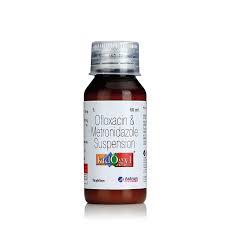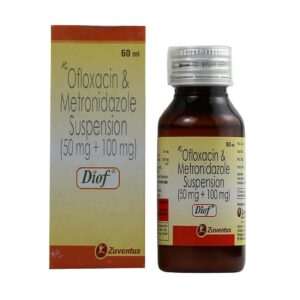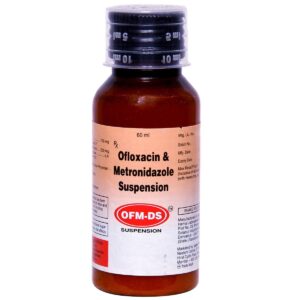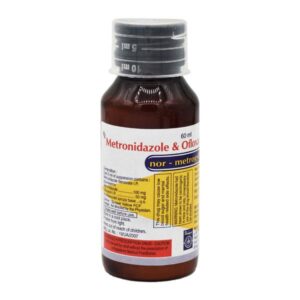METRONIDAZOLE + OFLOXACIN
Metronidazole: Metronidazole is an antibiotic drug that is used to treat various bacterial and parasitic infections. It belongs to the class of drugs known as nitroimidazoles. Metronidazole is primarily used to treat infections in the gastrointestinal tract, genital tract, skin, and other parts of the body.
The mechanism of action of metronidazole involves disrupting the DNA synthesis of the microorganisms, leading to their death or inhibition of growth. It does this by entering the bacterial or protozoal cell and causing damage to its DNA. Metronidazole is highly effective against anaerobic bacteria, such as those found in the digestive tract.
The typical dose of metronidazole varies depending on the severity of the infection and the patient’s medical condition. It is available in various forms, including tablets, capsules, creams, gels, and intravenous solution. The duration of treatment may range from a few days to several weeks.
Like any medication, metronidazole can cause side effects. Common side effects include nausea, vomiting, diarrhea, abdominal cramps, headache, dizziness, and metallic taste in the mouth. Some individuals may also experience allergic reactions such as rash or itching. In rare cases, metronidazole can cause more serious side effects, such as nerve damage, seizures, or blood disorders.
It is essential to take metronidazole exactly as prescribed by a healthcare professional. It is not recommended to consume alcohol while taking this medication as it may cause unpleasant side effects like nausea, vomiting, headache, and flushing.
Before starting metronidazole, it is important to inform your healthcare provider about any existing medical conditions, ongoing medications, or allergies to ensure its safe and effective use.
Ofloxacin: Ofloxacin is a fluoroquinolone antibiotic used to treat a variety of bacterial infections. It is available in oral form as tablets and suspension, as well as in ophthalmic and otic forms.
Mechanism of action: Ofloxacin works by inhibiting bacterial DNA gyrase and topoisomerase IV enzymes, both of which are essential for the replication, transcription, and repair of bacterial DNA. By targeting these enzymes, ofloxacin disrupts the DNA replication process and inhibits bacterial growth.
Use: Ofloxacin is commonly prescribed for the treatment of respiratory tract infections (such as pneumonia and bronchitis), urinary tract infections, sinusitis, skin and soft tissue infections, and sexually transmitted infections (such as gonorrhea). It is also used in ophthalmic and otic forms to treat eye and ear infections.
Dose: The dosage of ofloxacin varies depending on the type and severity of the infection being treated. It is important to follow the prescribed dosage and complete the full course of treatment to effectively eliminate the infection.
Side effects: Common side effects of ofloxacin may include nausea, vomiting, diarrhea, abdominal pain, headache, dizziness, and insomnia. It may also cause hypersensitivity reactions, such as rash, itching, and swelling. In rare cases, ofloxacin may lead to more serious side effects like tendonitis or tendon rupture, especially in the elderly or in individuals who have a history of tendon disorders. It is important to promptly report any unexpected or severe side effects to a healthcare provider.






